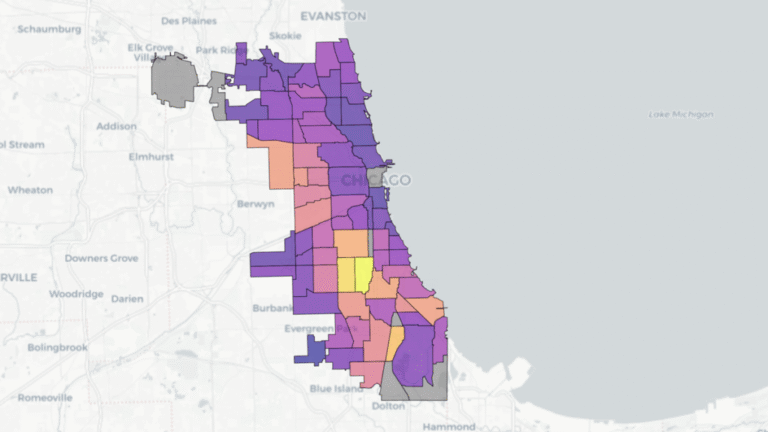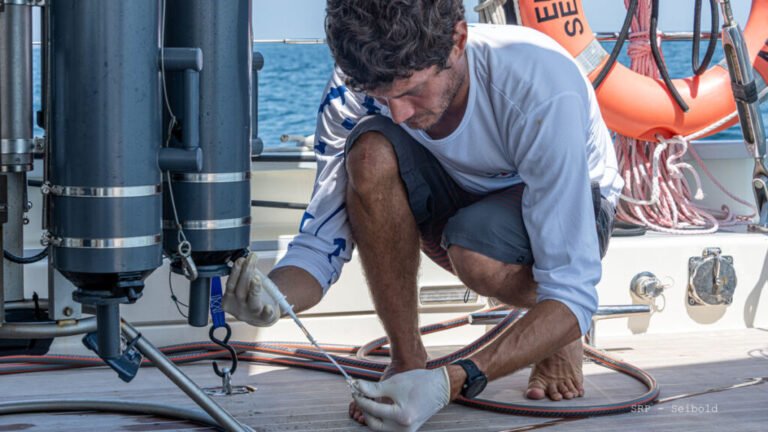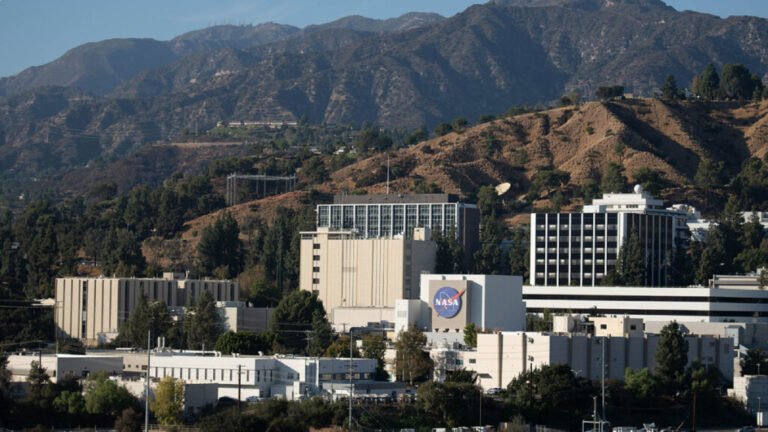

Wastewater from agricultural runoff and human waste contains nutrients such as nitrogen and phosphorus, which can pollute natural waters and cause harmful algal blooms. These nutrients may persist at low levels even after wastewater has been biologically and chemically treated.
In southern Florida, many wastewater treatment facilities inject the treated water into wells 60–120 feet deep. As the water percolates underground, it is diluted by rainwater and groundwater. Chemical interactions with Key Largo Limestone—the rock that makes up the subsurface in the upper and middle Keys—and with microbes living in the groundwater filter out residual nutrients, such as the nitrogen-bearing compounds nitrate and nitrite.
“The idea is that the microbial nitrogen cycle will transform nitrate and nitrite to ammonium and nitrogen gas, which is then released to the atmosphere, before the effluent reaches coastal waters,” explained Miquela Ingalls, a sedimentary geochemist at Pennsylvania State University (Penn State). Similarly, phosphorus is removed from wastewater via a chemical reaction that attaches it onto the limestone bedrock.
But a new study, coauthored by Ingalls, shows that shallow injection doesn’t entirely eliminate nitrogen, raising the possibility that the nutrient may be contaminating coastal ecosystems.
The study’s authors analyzed water from monitoring wells near a wastewater injection site in the Florida Keys. They found that nitrogen and phosphorus levels decreased as water moved away from the site, but were still detectable at a depth of 6 meters (20 feet) and a distance of 350 meters (~1,150 feet) from the injection site, close to the Florida Bay shoreline.
In an earlier study targeting phosphorus, also in the Florida Keys, Ingalls and other researchers at Penn State concluded that up to 10% of initially present soluble reactive phosphorus (the form of phosphorus that can be directly taken up by plants) remained in injected water and was ultimately discharged into the ocean.
The new study aimed to determine how effectively shallow injection eliminates nitrogen.
Some Nitrogen Persists
The study focused on a wastewater injection site in Marathon, located on Vaca Key. The city of Marathon currently pumps treated wastewater between 18 and 27 meters (59–89 feet) into the underlying Key Largo Limestone. In 2021 and 2022, Penn State scientists installed nine monitoring wells 3–27 meters (10–89 feet) deep near the injection site. The researchers then measured levels of nitrate, dissolved nitrogen, and other chemicals at the monitoring wells from 2021 to 2023 and compared them with the levels found in the injected wastewater.
Nitrate levels were elevated at a monitoring well 350 meters (~1,150 feet) from the injection site and close to the Florida Bay.
At most wells, nitrate was completely eliminated from wastewater 2 weeks after injection. However, nitrate levels remained elevated 3–6 meters (10–20 feet) deep in a monitoring well 350 meters (~1,150 feet) north of the injection site and close to the Florida Bay.
This monitoring well is farthest from the injection site and is probably in the path of injected wastewater, according to the previous study, which found that wastewater injected in Marathon mostly travels north and east. As it travels, the water rises toward the surface. This may explain why nitrate is elevated at the most distant well: Close to the injection site, wastewater remains at its initial depth, but after traveling hundreds of meters, it has risen far enough to contaminate shallow groundwater. The contaminated well’s location on the Florida Bay shoreline suggests that along with phosphorus, some wastewater-derived nitrogen may be washing out to sea.
The authors attributed the imperfect filtering of nutrients to the unique setting of the Florida Keys. For wastewater injection, timing is important: The longer wastewater remains underground, the more time there is for microbial and chemical processes to filter out contaminants. But the Keys are mostly composed of small, narrow islands, so the injected wastewater doesn’t travel very far before reaching the ocean.
Groundwater in the Keys also mixes with seawater, making an especially salty and dense mixture. The injected wastewater has a lower density, causing it to buoy up toward the surface and limit the time spent underground.
Nitrogen Pollution Harms Coastal Ecosystems
The discharge of nitrogen into the Florida Bay may have consequences for marine life. The researchers found total nitrogen concentrations of 18 micromoles per kilogram just offshore of the contaminated monitoring well, surpassing the local threshold of 16.1 micromoles per kilogram defined by the Florida Department of Environmental Protection.
Such pollution from wastewater and other human activities is harmful to wildlife, said Brian Lapointe, a marine scientist at Florida Atlantic University who was not involved in the research, because “increased nutrient concentrations support not only algal blooms and microbial pathogens, including coral diseases, but also myriad water quality problems.”
“Nutrient pollution from shallow injection wells has been a major local pollution source driving eutrophication in coastal waters of the Florida Keys for decades.”
“Nutrient pollution from shallow injection wells has been a major local pollution source driving eutrophication in coastal waters of the Florida Keys for decades,” Lapointe said. But both Lapointe and Ingalls highlighted that nutrient pollution in certain parts of the Florida Keys has decreased in recent years, largely due to advances in wastewater treatment. “The effluent being injected into the subsurface starts with a lower concentration of nutrients, so there is less to remediate by biological and chemical processes within the Key Largo Limestone,” Ingalls said.
Nonetheless, Lapointe recommended eliminating shallow injection of wastewater as a way to reduce nutrient pollution. The city of Marathon is set to phase out shallow injection following a 2022 lawsuit filed by the environmental group Friends of the Lower Keys (FOLKs). Instead, the city will transition to deep well injection, which is used in other parts of the Florida Keys. Deep wells inject wastewater more than 2,000 feet underground, lowering the chances that wastewater will rise to the surface before microbes and chemical reactions can filter out contaminants.
—Caroline Hasler (@carbonbasedcary), Science Writer
Citation: Hasler, C. (2025), Shallow injection imperfectly filters Florida wastewater, Eos, 106, https://doi.org/10.1029/2025EO250357. Published on 26 September 2025.
Text © 2025. The authors. CC BY-NC-ND 3.0
Except where otherwise noted, images are subject to copyright. Any reuse without express permission from the copyright owner is prohibited.






